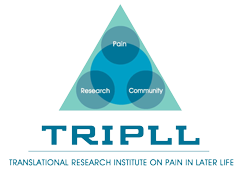Relationship between acute pain trajectories after an emergency department visit and chronic pain: A Canadian prospective cohort study
Inadequate acute pain management can reduce the quality of life, cause unnecessary suffering, and lead to the development of chronic pain. Using group-based trajectory modelling, the authors previously identified six distinct pain intensity trajectories for the first 14-day post emergency department discharge. Two linear ones with moderate or severe pain during follow-up and four cubic polynomial trajectories with mild or no pain at the end of the 14 days. The authors assessed if previously described acute pain intensity trajectories over 14 days after the discharge are predictive of chronic pain 3 months later. Studies assessing acute pain management after emergency department visits showed that a substantial number of patients continue to experience pain even 7 days after discharge. Inadequate acute pain management can reduce the quality of life, cause unnecessary suffering, decrease productivity or academic performance and can lead to the development of chronic pain.
Daoust R, Paquet J, Cournoyer A, et al. Relationship between acute pain trajectories after an emergency department visit and chronic pain: A Canadian prospective cohort study. BMJ Open. 2020;10:e040390.
Click here to read full article
